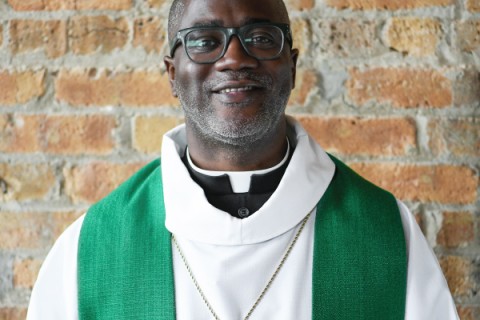Neo-Anabaptist myths and Mennonite reality on the problem of white homogeneity in Anabaptist communities
Not so fast
Not so fast my neo-Anabaptist brothers (and sisters?). It seems like a brief and short response to the prevalent myth running in neo-Anabaptist circles, in regards to the problem of white homogeneity that needs broader insight to break past the myth and look at what is actually going on in reality.
I have seen and heard in blog posts, Twitter conversations, conferences, and personal encounters with neo-Anabaptists, a particular answer and response to Anabaptism’s apparent white homogeneity problem. The answer often seems to seek to offer a sort of origins story or myth that explains the current realities that they must now address in their work today. And yet, the response given by many (not all) neo-Anabaptists has been misguided, misinformed, and misrepresentative of the past and present reality of race in issues in Anabaptism. Without going into a long treaty to respond I do hope to clarify a few points that should reorient the discussion and point it in a new trajectory, leading hopefully to better ecclesial and social practices among Christians self-identified as Anabaptists.
It’s not us, it’s them
What I have observed is usually a white male neo-Anabaptist (that is someone outside of the historic Anabaptist denominations like Mennonite or Brethren) will be wrestling with why all their Anabaptist networks are dominated by white people. In considering this reality, neo-Anabaptists point to the fact that they have joined into an already ongoing Anabaptist tradition that goes all the way back to the 16th century. They narrate in brevity how Mennonites fled Europe and came to the U.S. because of the severity of century’s persecution and displacement with the hopes of finding peace and quiet in the new land. As the story unfolds more, they highlight the quietism and ethnocentric life that developed by these communities that huddled into rural communities and largely remained in familial and ethnicity defined communities for generations out of the trauma of the past. In doing so, they inevitably created a homogenous community, that is a white homogenous community. From there, neo-Anabaptists suggest that they have now entered into this conversation and community that already had a white homogeneity problem prior to their joining the conversation. They see the gift of groups like the Mennonites, as carriers of a great tradition but also lost and veiled by these white homogenous practices.
Thankfully, as they see it, they have come from the outside without the same historical, cultural, and ethnic baggage, and therefore can aid these historic Anabaptist groups in crossing cultures better, engaging in more contextualized and relevant ministry for today that will be more diverse and have a new face, than what was known prior.
Turning the table on the social inspection
And while the historical narration of the Mennonites migration from Europe to the U.S. is a bit simplistic, there are some real truths to what neo-Anabaptists have said about the historic Anabaptist denominations and groups. If that isn’t the primary issue, then what is the problem? Well it is precisely that neo-Anabaptists seem to be placing the current critiques of white homogeneity at the feet of the historic groups feet rather than by discussing their history, culture, and issues but have forgotten to do the same for their own formation. Believe it or not, neo-Anabaptists have not dropped out of a cultural and historical vacuum, in which they are the only ones who come untouched by history. They too have been socialized by something as well. More specifically, my engagement with the particular neo-Anabaptists making this particular argument are most often leaders that came from (and still are) deeply a part of the white evangelical community. Believe it or not, but white evangelicals also have a long history with race. Unfortunately, unlike Mennonite history which includes providing the very first petition against slavery in the colonies all the way back in 1688, and the overall rejection of the practice of slavery by their communities throughout American history (and no denominational splits over the issue), many neo-Anabaptists have a tradition deeply rooted in overwhelming turn towards endorsing slavery by the Church going into the 19th century. This was followed by the endorsement or accommodation of white evangelical communities in regards to black codes, Jim and Jane Crow, lynching, KKK and white citizens councils, neo-slavery convict leasing systems, and the ongoing refusal to acknowledge the image of God and dignity in black life even up until today. Neo-Anabaptists are not, and should not be in a place in which they speak condescendingly and paternalistically to groups like Mennonites. As history tells it, they still have catching up to do in this regard.
My on-the-ground experiences among neo-Anabaptist and historical Anabaptist communities
And this leaves me with my final thoughts around the current reality. The truth is that my movement within neo-Anabaptist communal gatherings and conferences have often left me deeply discouraged by the degree to which their communities are often so homogenous, being kept so through centralized power structures that over-advantage white males to dominate and control the life, direction, and ethos of their organizations and communities. On the flip side, while Mennonites and historic Anabaptist groups do indeed have work to do, I have also found them to be something other than the stereotype. Mennonites for example are actually 20 percent nonwhite in North America, and mostly non-white when considered from a global perspective. They are not the Mennonite Church you imagine in your head. My Anabaptism (and anablacktivism) was born out of life within historic Anabaptist groups. My own experience has been among racially diverse and urban Anabaptists in Harrisburg, Pennsylvania, and Philadelphia and now with growing networks across the country and around the world. Mennonites have hosted events like “Black Women Rock,” which featured African American women as the primary speakers for the conference for a racially diverse audience while the last neo-Anabaptist organized event I attended had no women of color speakers or workshop leaders. I’ve been and will attend historic Anabaptist conferences featuring diverse speakers that all speak into who WE are collectively. Yet I am told by neo-Anabaptist leaders that the reason they had no people of color speakers is because the particular white men they chose to speak are “the ones leading the conversation.” In a couple days, though I am not Mennonite, I will be speaking to a Mennonite group comprised of Mennonite People of Color and Mennonite Institutional leaders that are coming together to discuss organizational power in the Mennonite Church and how they can create access and better selecting processes for a more unified Church in Christ. That is very different than the dismissals I receive when honestly wanting to see a neo-Anabaptist organization share power around the table with women and people of color.
The Mennonite Church is far from perfect. There is work that needs to be done. But there are significant pockets where God’s reign is being manifested amidst our racialized society. I think that neo-Anabaptists ought to not move so fast towards shifting their racial homogeneity on historic Anabaptist denominations and consider the possibility that they need to vulnerably open their ears up more to those that have been so often excluded by the White evangelical Church, and in doing so, maybe they can catch up to the Mennonite Church in the journey.





